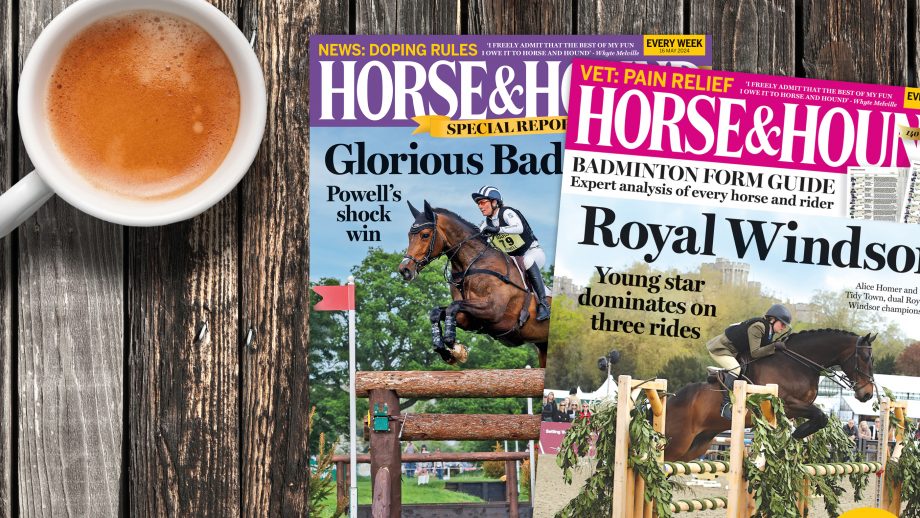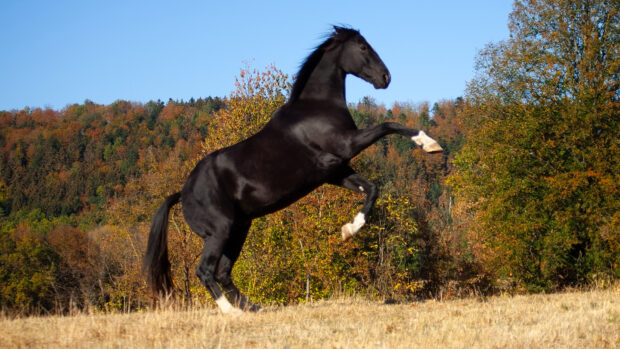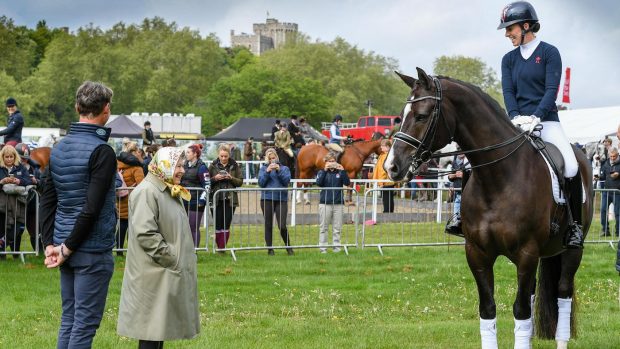One of Denmark’s most influential dressage studs, Blue Hors, has announced it is withdrawing its horses from competition while the country works to establish a new framework for horse welfare in sport.
“Danish dressage is in a time of change, when horse welfare, training methods and animal ethics are up for debate,” a spokesperson from the stud said.
“These developments are taking place against a deeply serious background, and are decisive for the future of the sport. The debate has started a long-awaited effort to make clearer guidelines for the ethical correct use of horses in sport.
“The initiative is part of the Danish Equestrian Federation’s (DRF) new strategy ‘Together for Horse Welfare’, which also focuses on better education and changes to competition judging.
“We support the work of the association, so that together we can create a better and clearer framework for the future – for the sake of horses, riders and the sport.
“As long as there is so much ambiguity as to what the correct ethical use of horses is, we have temporarily chosen to pause Blue Hors’ participation in dressage events. Initially for three months, after which we will assess whether a greater common understanding of horse ethics and sporting guidelines has been achieved, or whether we should extend the break from the event further.”
The reference to competition judging is notable. At last week’s CDI in Herning, there was more than a 7% difference in scores for Nanna Skodborg Merrald’s winning CDI3* performance on Blue Hors Znickers. Danish judge Hans-Christian Matthiesen, who has said he believes the sport needs to change, awarded the lowest score of 65.11%, while Britain’s Richard Baldwin gave the highest at 72.61%.
While variations in scoring between judges are not uncommon, this follows a recent Level 4 Judges Meeting in Bern, Switzerland (4-5 February) where, according to FEI documents, open and collaborative discussions were held on solutions to ensure “the wellbeing of dressage horses is prioritised”. Topics included “mouth and contact issues” and reforms to the judges’ educational programme.
Blue Hors’ temporary withdrawal from sport highlights these broader concerns and uncertainties about competition standards, and the role of judging in horse welfare.
Blue Hors’ legacy in Danish dressage
Owned by Danish billionaire Kjeld Kirk Kristiansen – president and CEO of The Lego Group from 1979 to 2004 – Blue Hors has helped launch the careers of some of Denmark’s most successful dressage riders, including Andreas Helgstrand and Daniel Bachmann Andersen – as well as Nanna.
Though the stud downsized in 2023 – moving from its expansive Randboel facilities to Stutteri ASK – their horses have remained prominent on the international competition circuit.
Riding Blue Hors Zepter, Nanna was part of the Danish silver-medal winning team at last summer’s Paris Olympics and she has also been a regular on this season’s World Cup circuit on Blue Hors Znickers, Blue Hors St. Schufro and Blue Hors Don Olymbrio.
Blue Hors has also been at the forefront of progressive change in equestrian sport. In 2018, it became one of the first European studs to publicly disclose its testing results for Warmblood Fragile Foal Syndrome (WFFS) – a transparency move that set a precedent for other breeding programmes.
Denmark’s tipping point on horse welfare
This latest step comes at a critical time for equestrian sport in Denmark. In December, The Danish Council on Animal Ethics published a series of recommendations regarding new “legislative initiatives” for the involvement of horses in sport in Denmark, which included a proposed ban on double bridles and riding behind the vertical.
The council has no legislative power itself, but the Danish minister of food, agriculture and fisheries, Jacob Jensen – with whom the decision ultimately rests – told Horse & Hound that: “The well-being of animals is extremely important to me; and that includes horses.
“Therefore, I have had multiple meetings with stakeholders from Danish equestrian sports, as I do in general on most subjects. Here I have underlined the importance of the industry taking responsibility for ensuring proper care of horses in equestrian sports.
“At the same time, I have emphasised that I am willing, if deemed necessary, to issue legislation regarding this subject. Animals must be treated properly. It is that simple.”
A spokesperson added: “The Ministry, aided by the Danish Veterinary and Food Agency, is currently in a process of reviewing all of the recommendations from The Danish Animal Ethics Council and uncovering the possibilities within this subject.”
The DRF has now initiated work on updating the guidelines for the professional and ethically correct use of horses in sport.
“The update of the professional basis for the correct use of horses in sport will be based on recommendations from researchers as well as veterinary and riding experts,” a spokesperson said.
“The DRF will draw on knowledge and experience from a broad composition of experts and professionals, ensuring both research expertise within the current areas as well as veterinary and riding technical understanding.
“In the first phase, we will focus on, among other things, head-neck position as well as behavioral and conflict markers. The external experts will work independently and without interference from the equestrian federation.”
- To stay up to date with all the breaking news from major shows throughout 2025, subscribe to the Horse & Hound website
You may also be interested in:

Why we are seeing blue tongues in dressage arenas – and what needs to be done about it

Proposed ban on double bridles and riding behind the vertical debated in European Parliament

Bitless dressage allowed and nosebands and double bridles optional in new Danish rules

Are uniformly loose nosebands the answer to horse sport’s image problems, or ‘the beginning of the end’?

Concerns over horses’ ‘blue tongues’ and open mouths pictured at World Cup qualifier

Subscribe to Horse & Hound magazine today – and enjoy unlimited website access all year round






